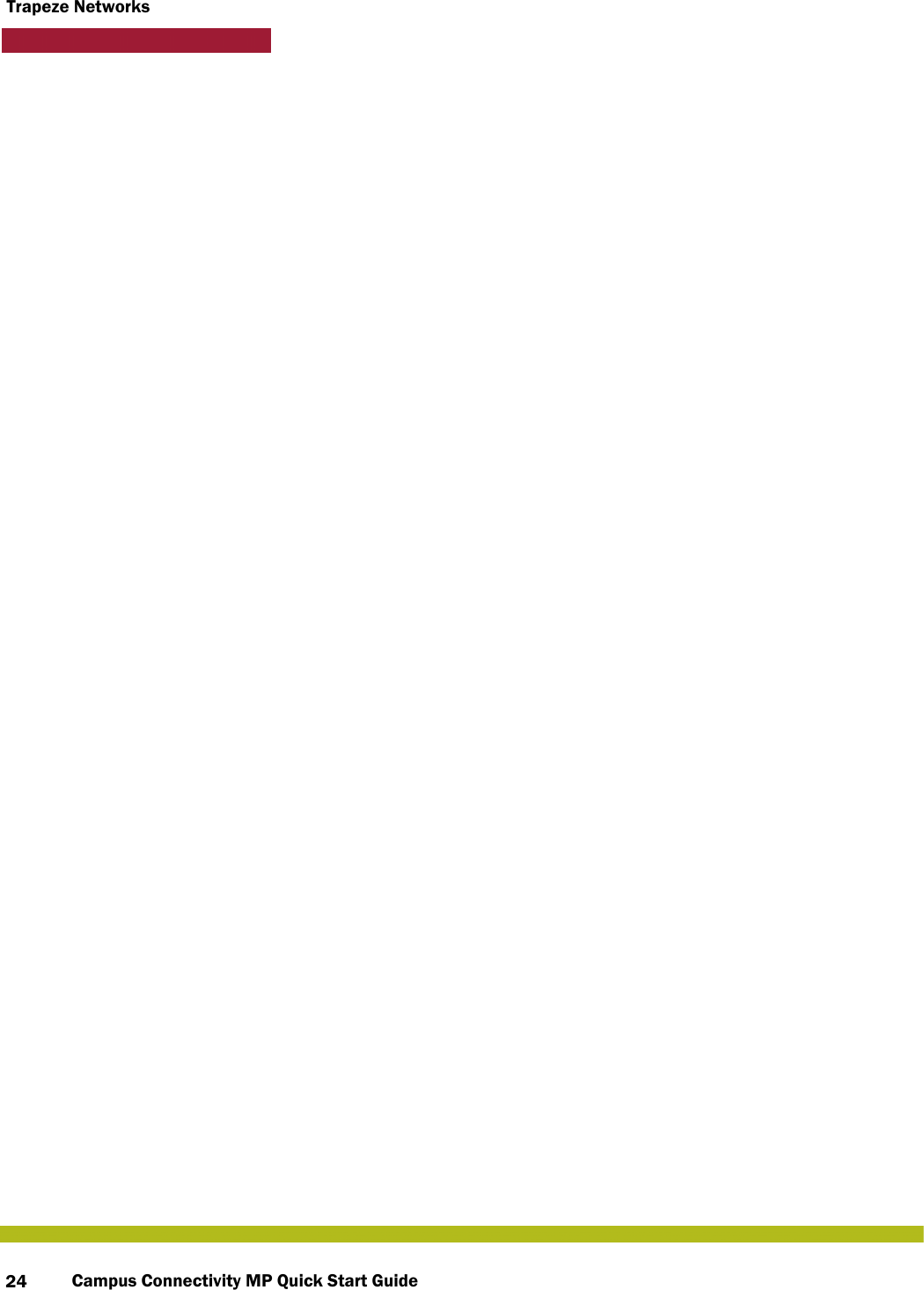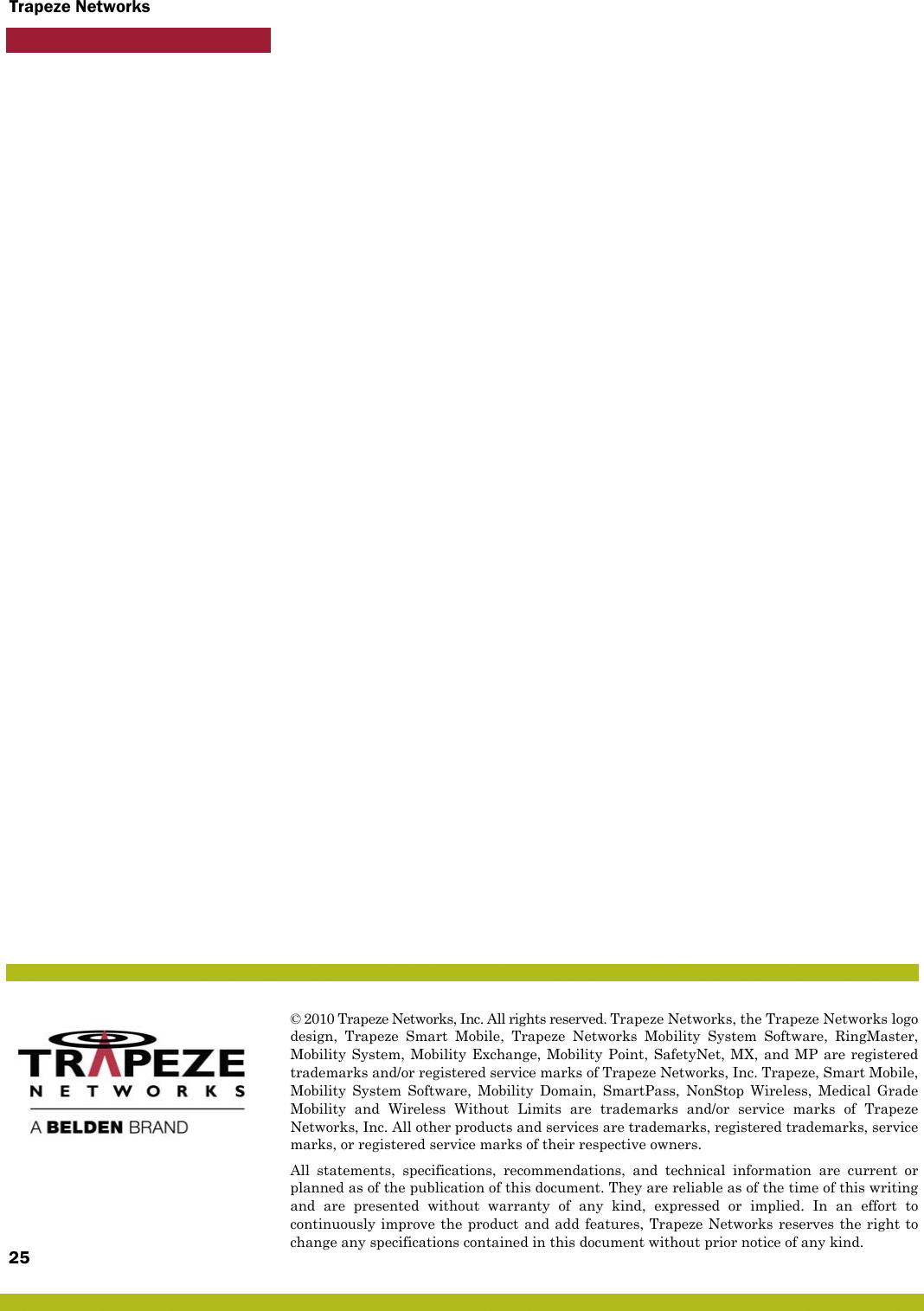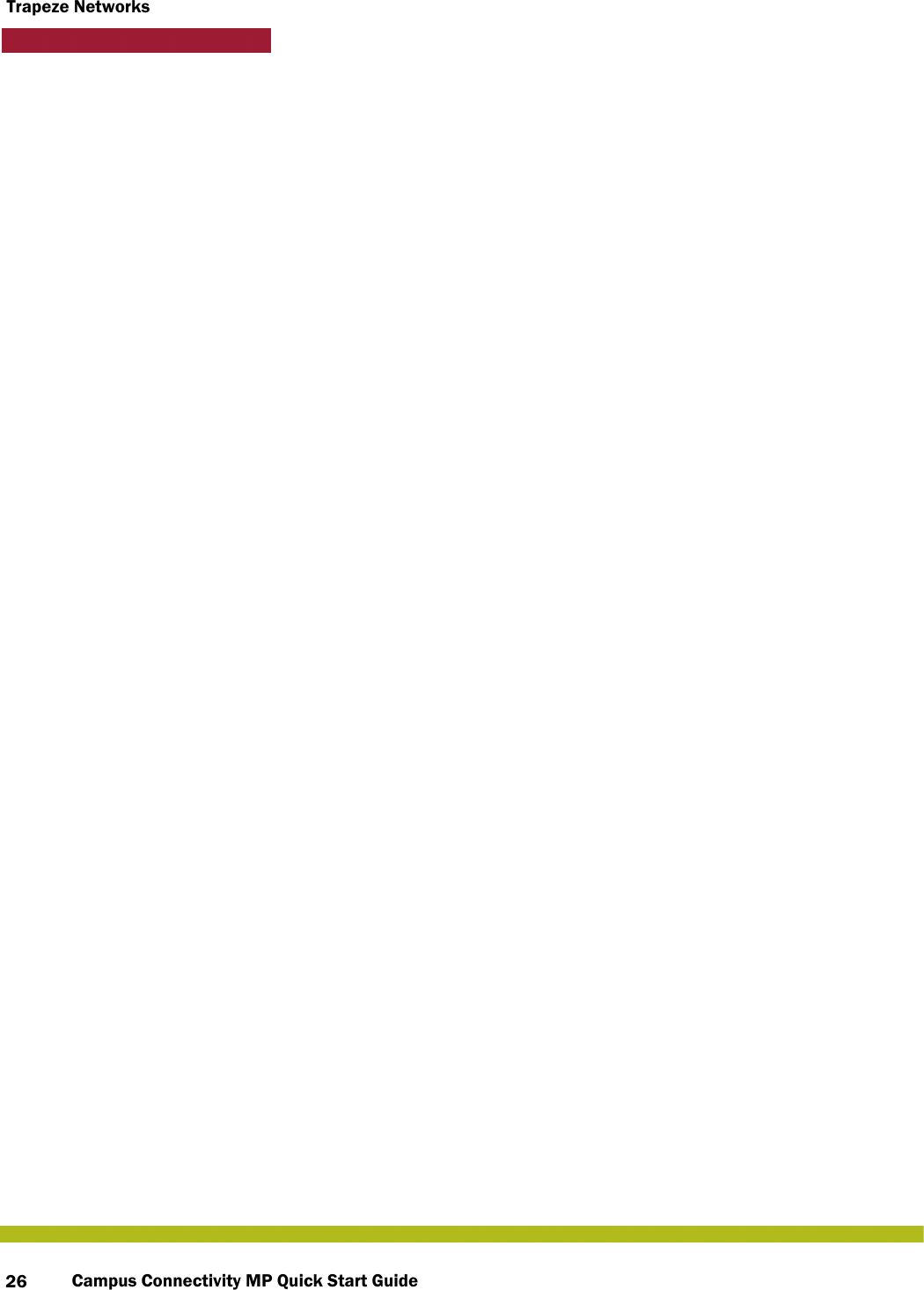Juniper Networks 632 802.11abgn outdoor AP User Manual Trapeze Manual s and reference
Juniper Networks, Inc. 802.11abgn outdoor AP Trapeze Manual s and reference
Contents
- 1. User Manual
- 2. Campus Connectivity MP Quick Start Guide Rev. A
- 3. Campus Connectivity MP Quick Start Guide Rev B
Campus Connectivity MP Quick Start Guide Rev. A
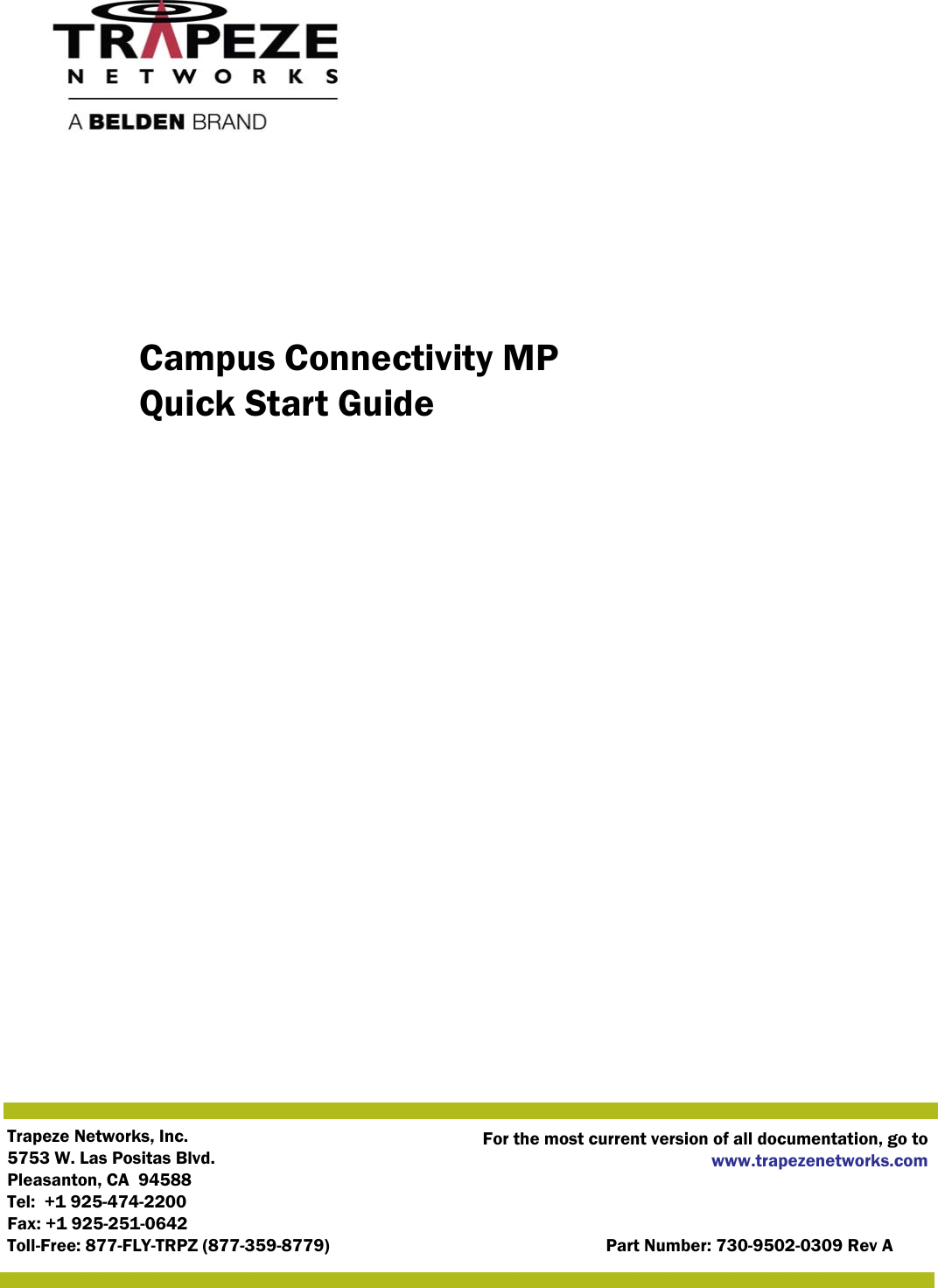
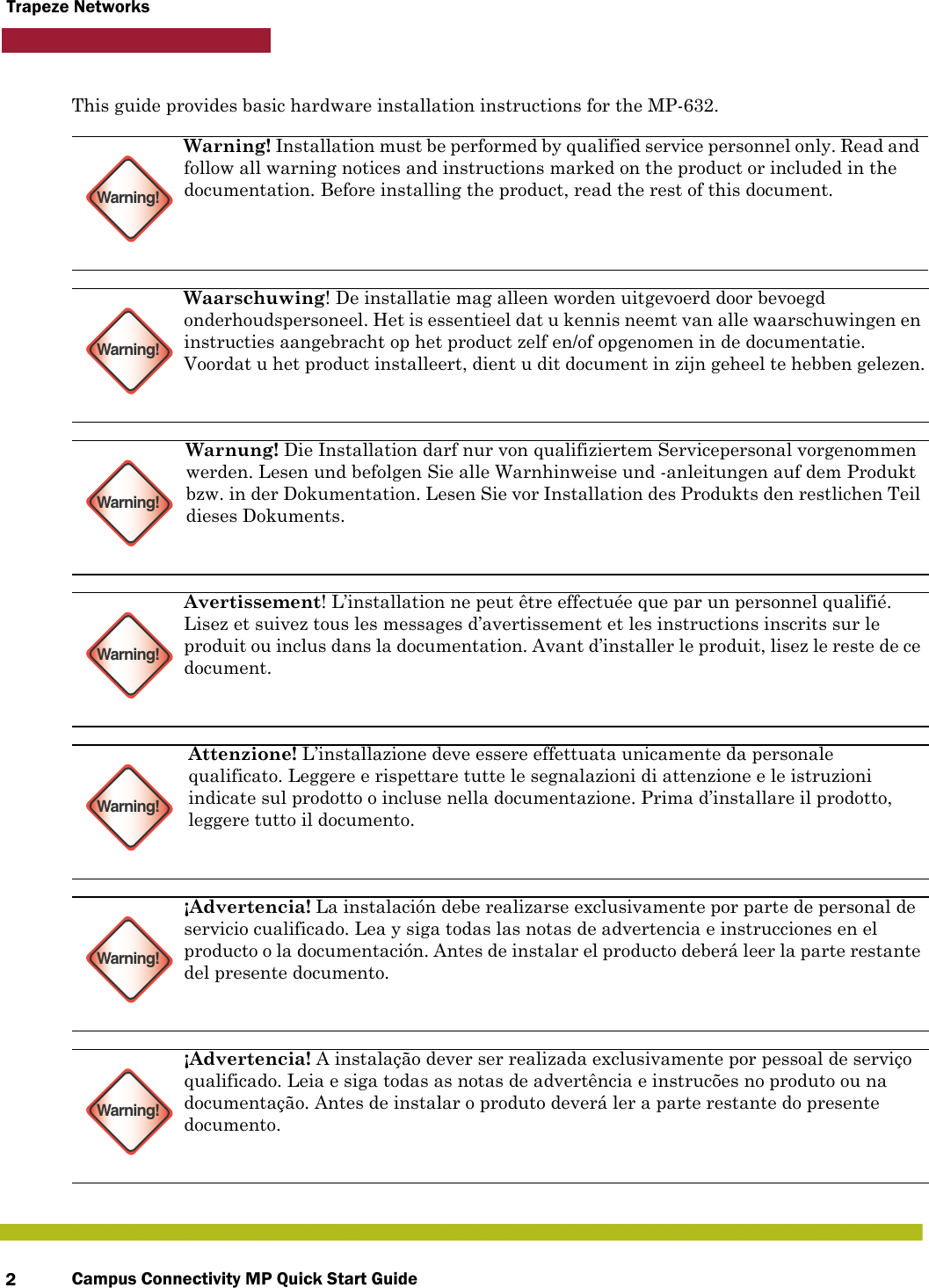
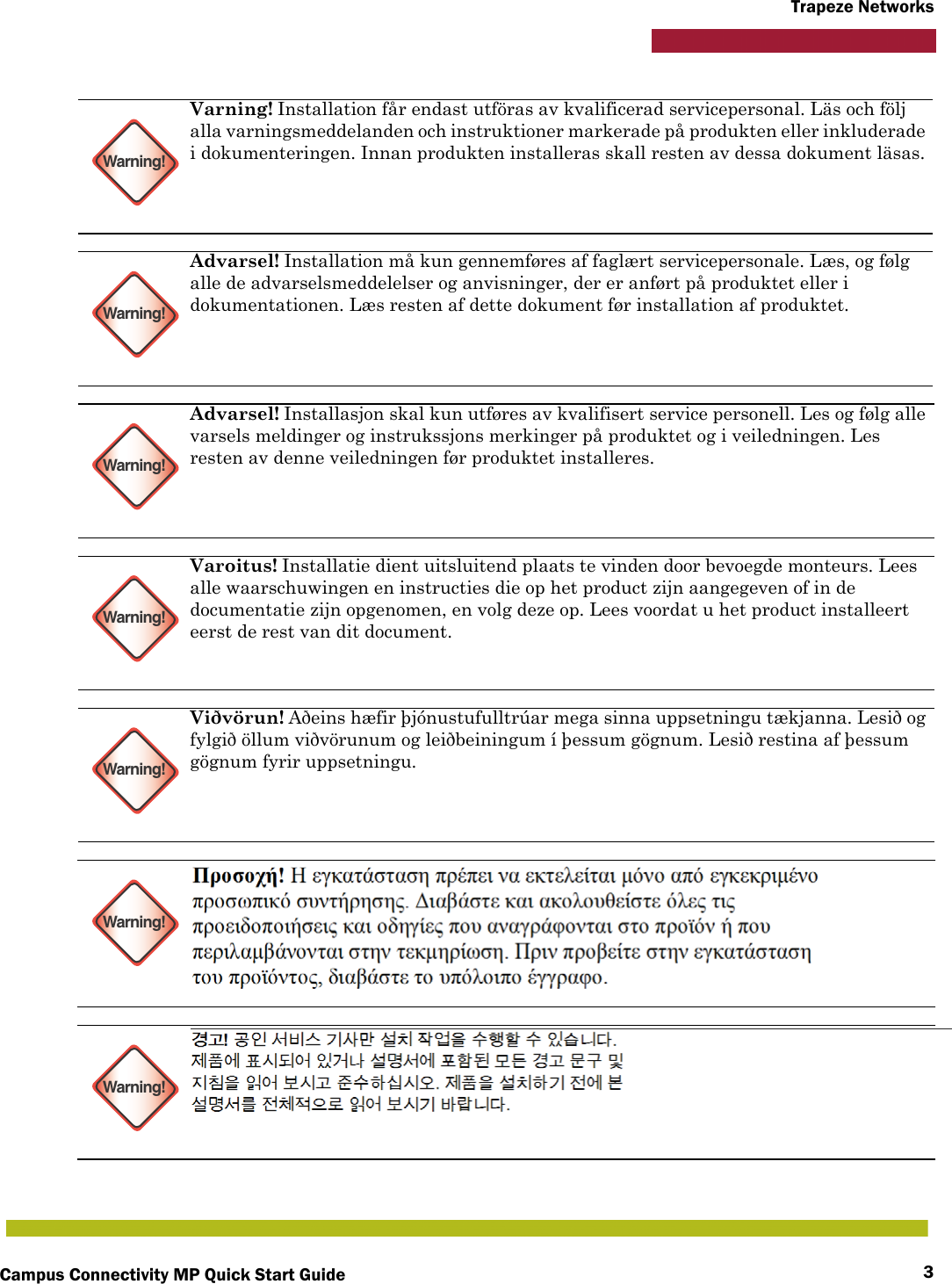
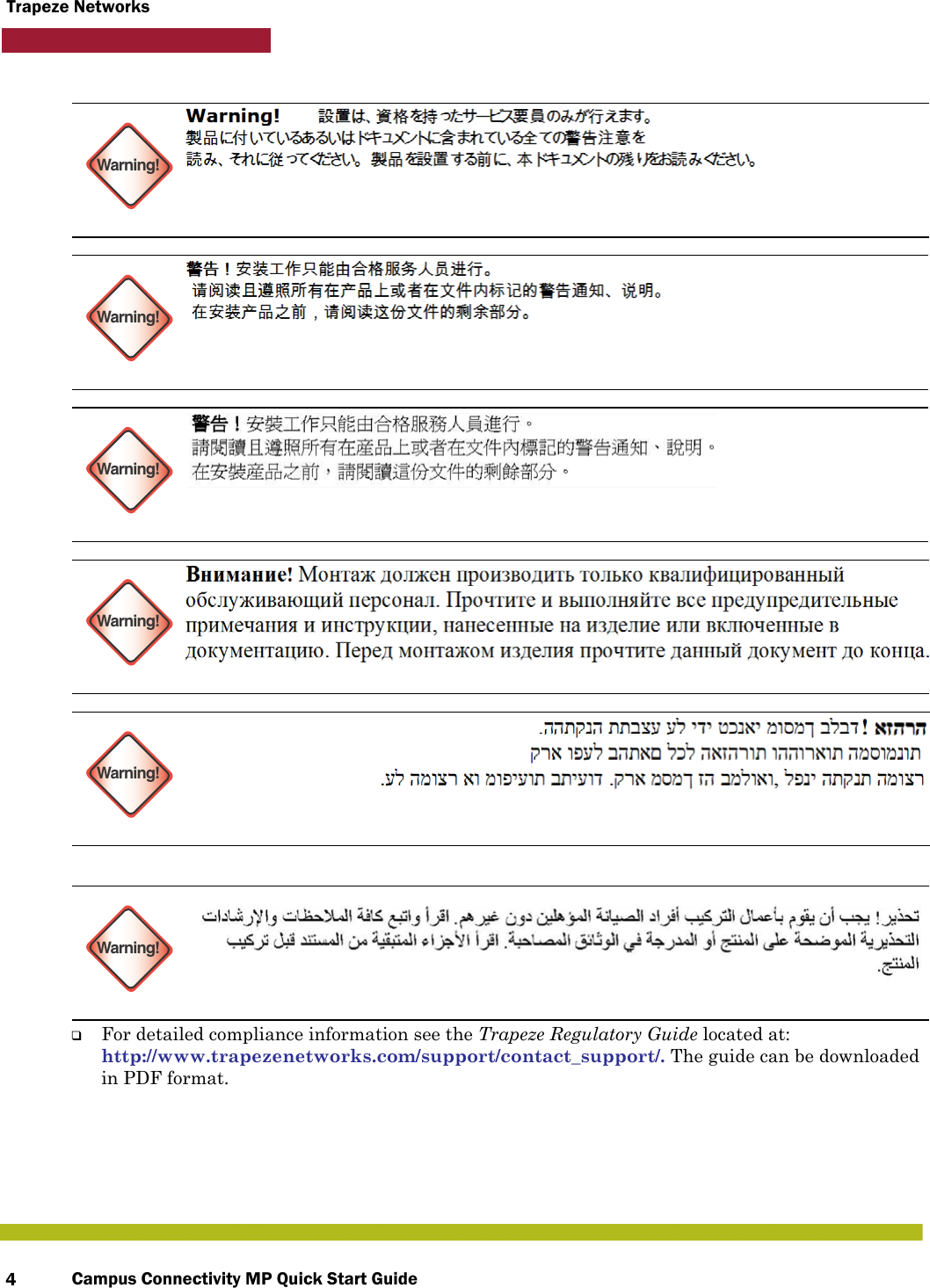
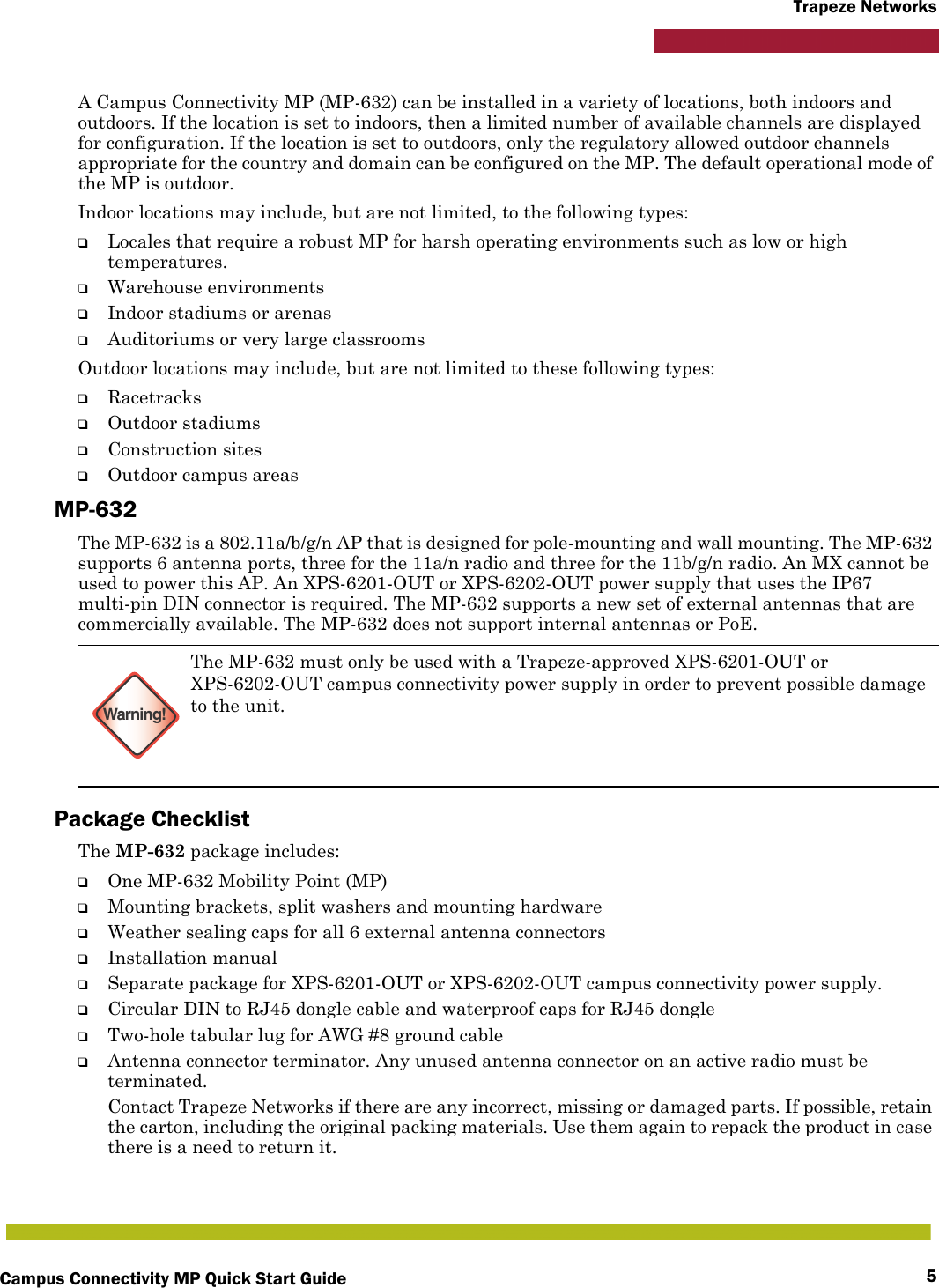
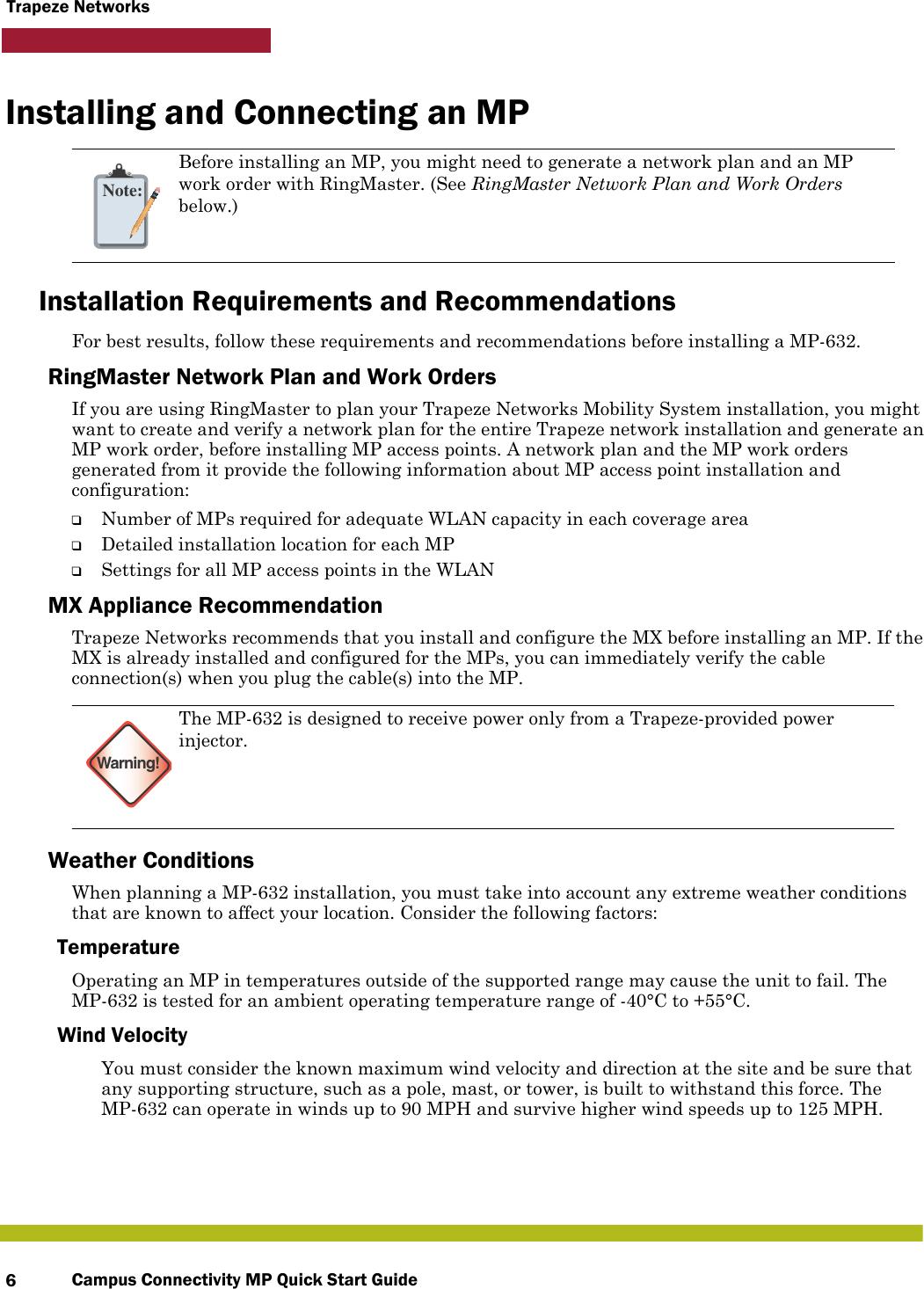
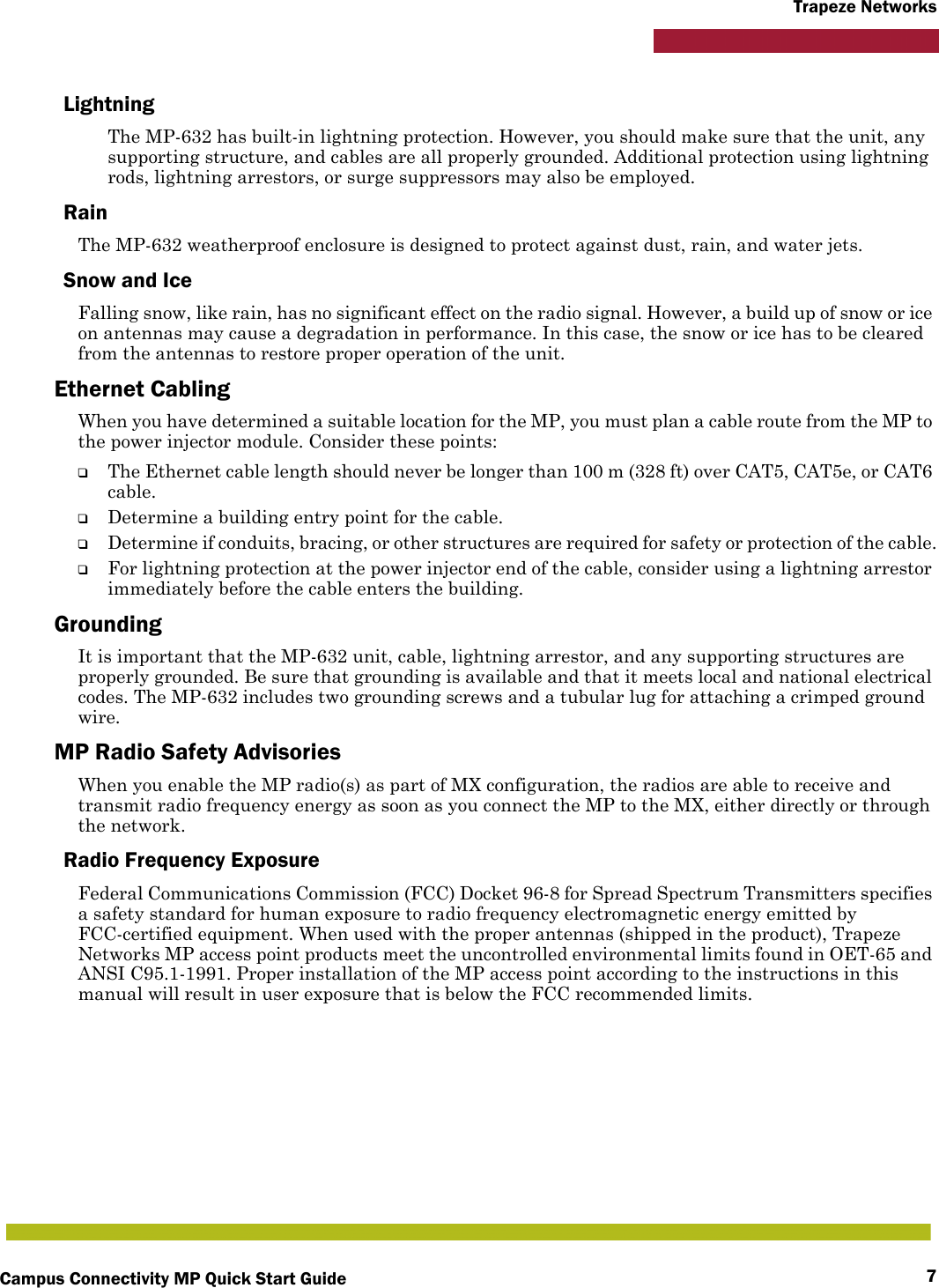
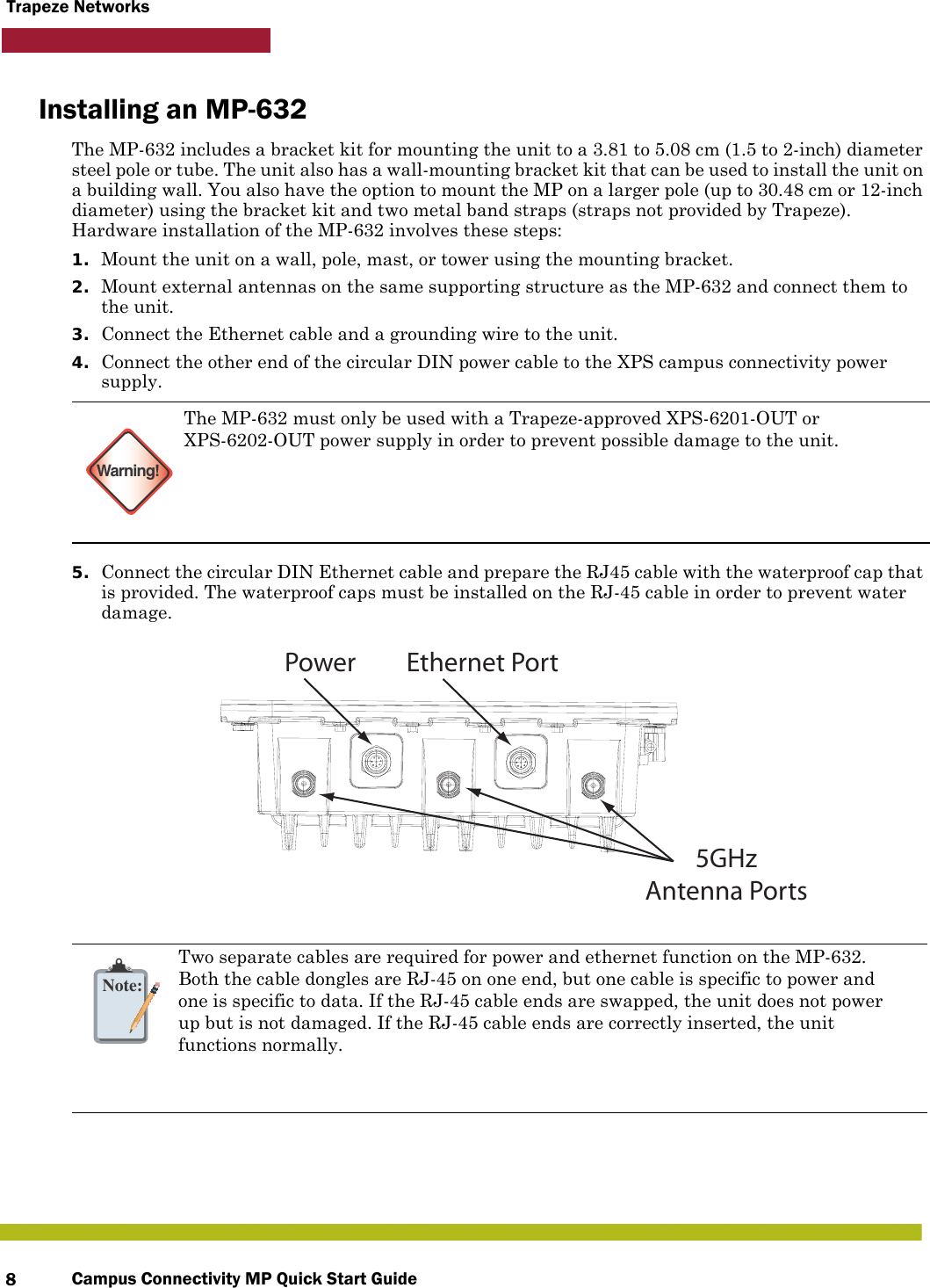
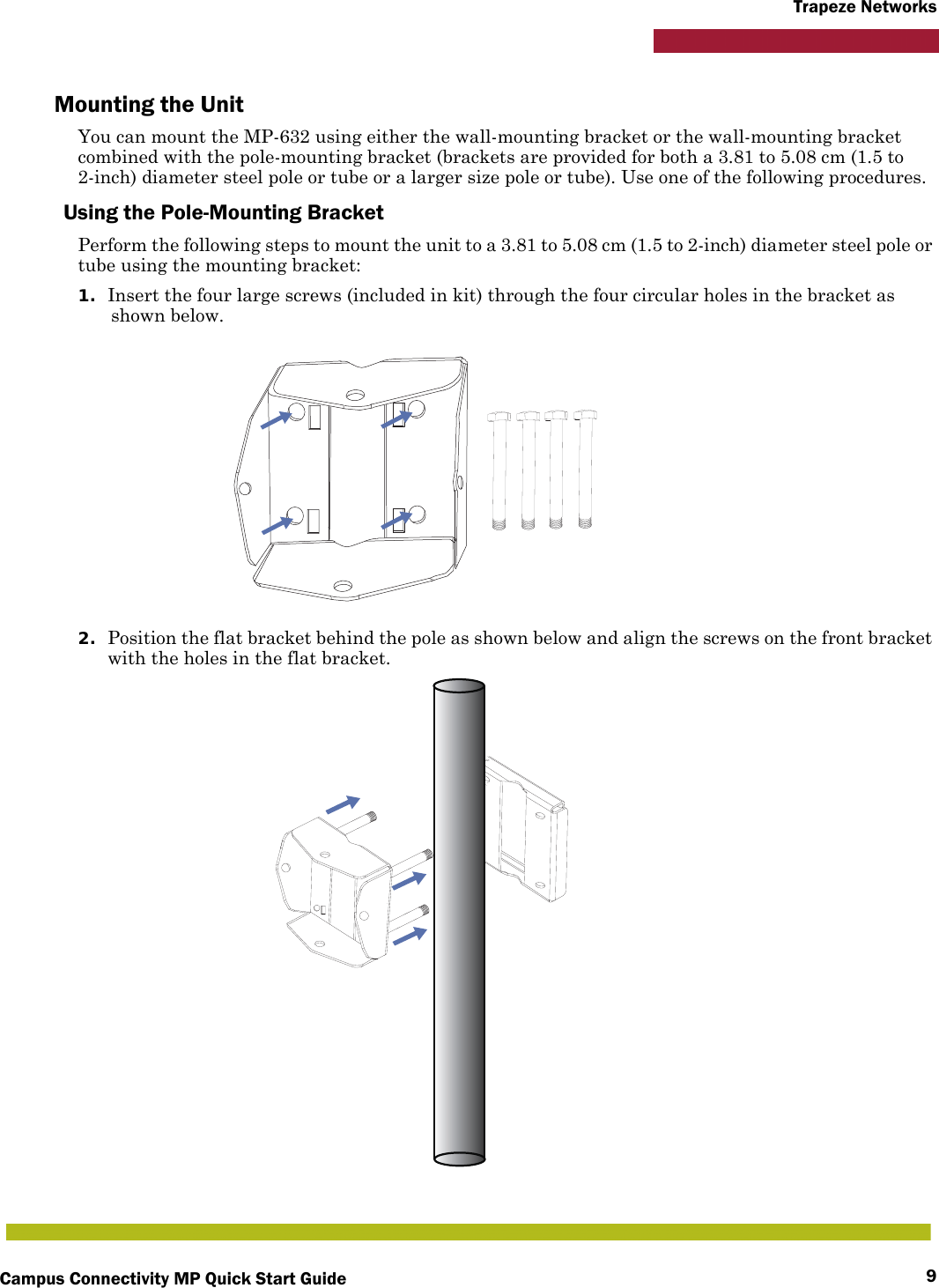
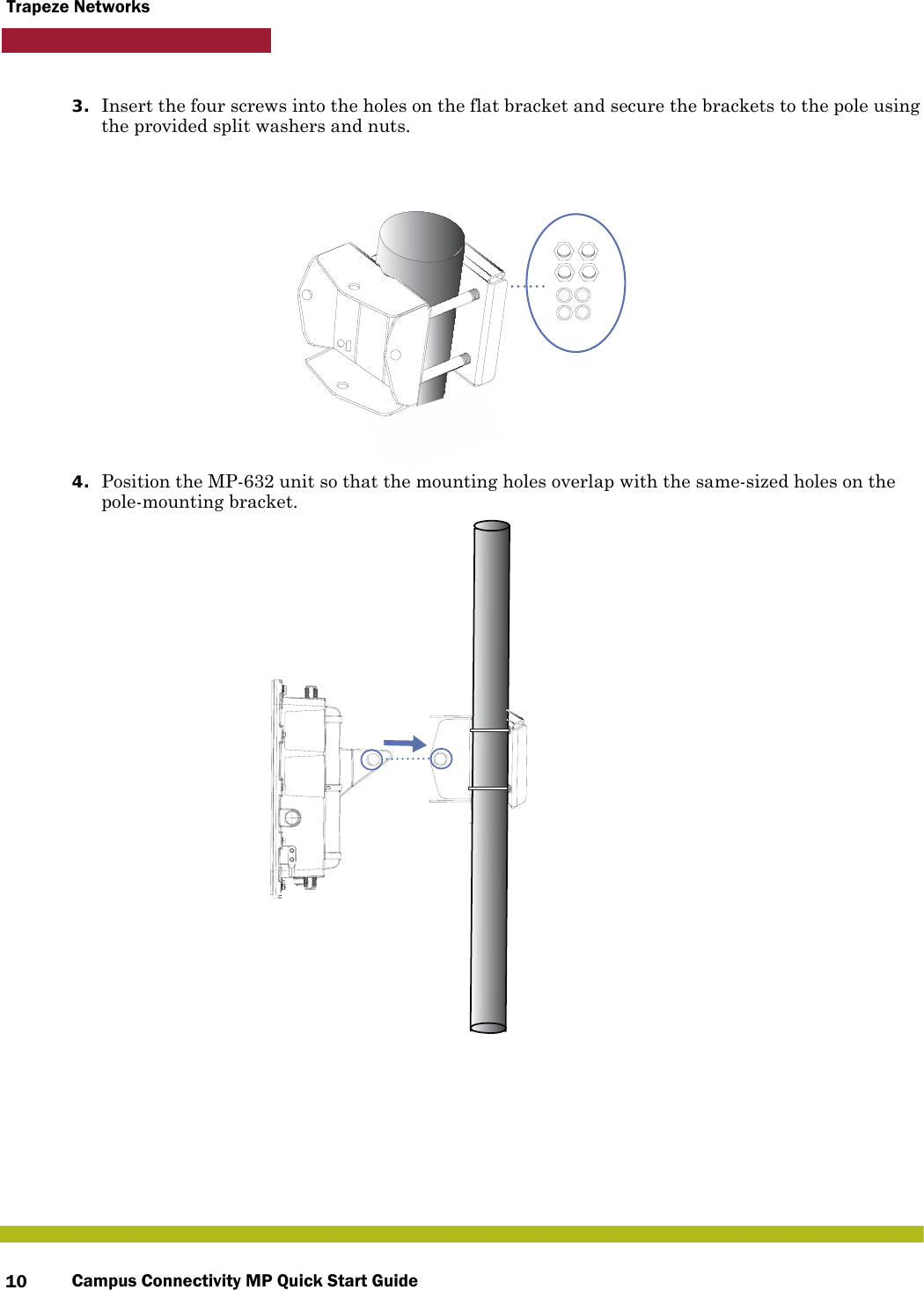
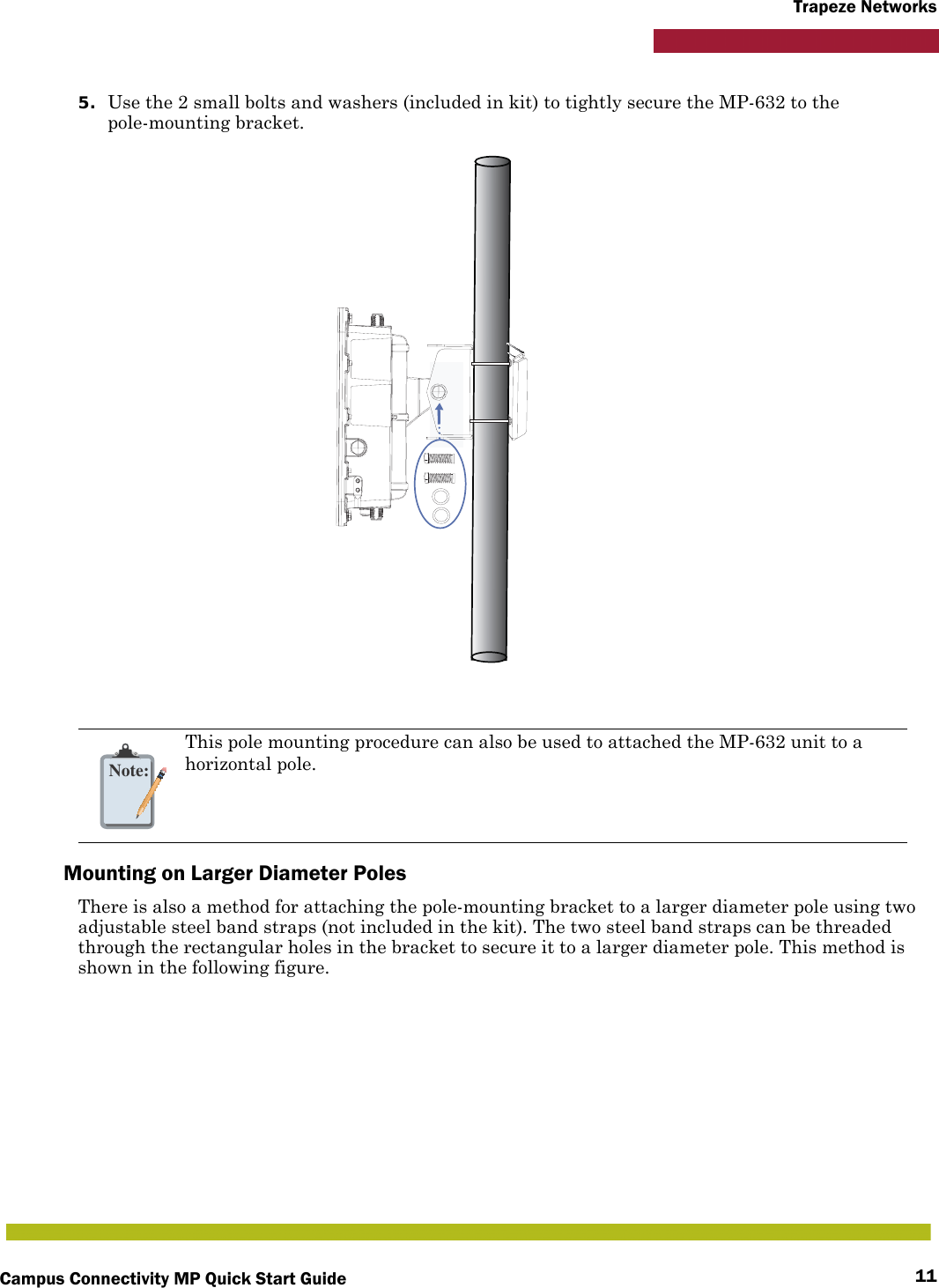
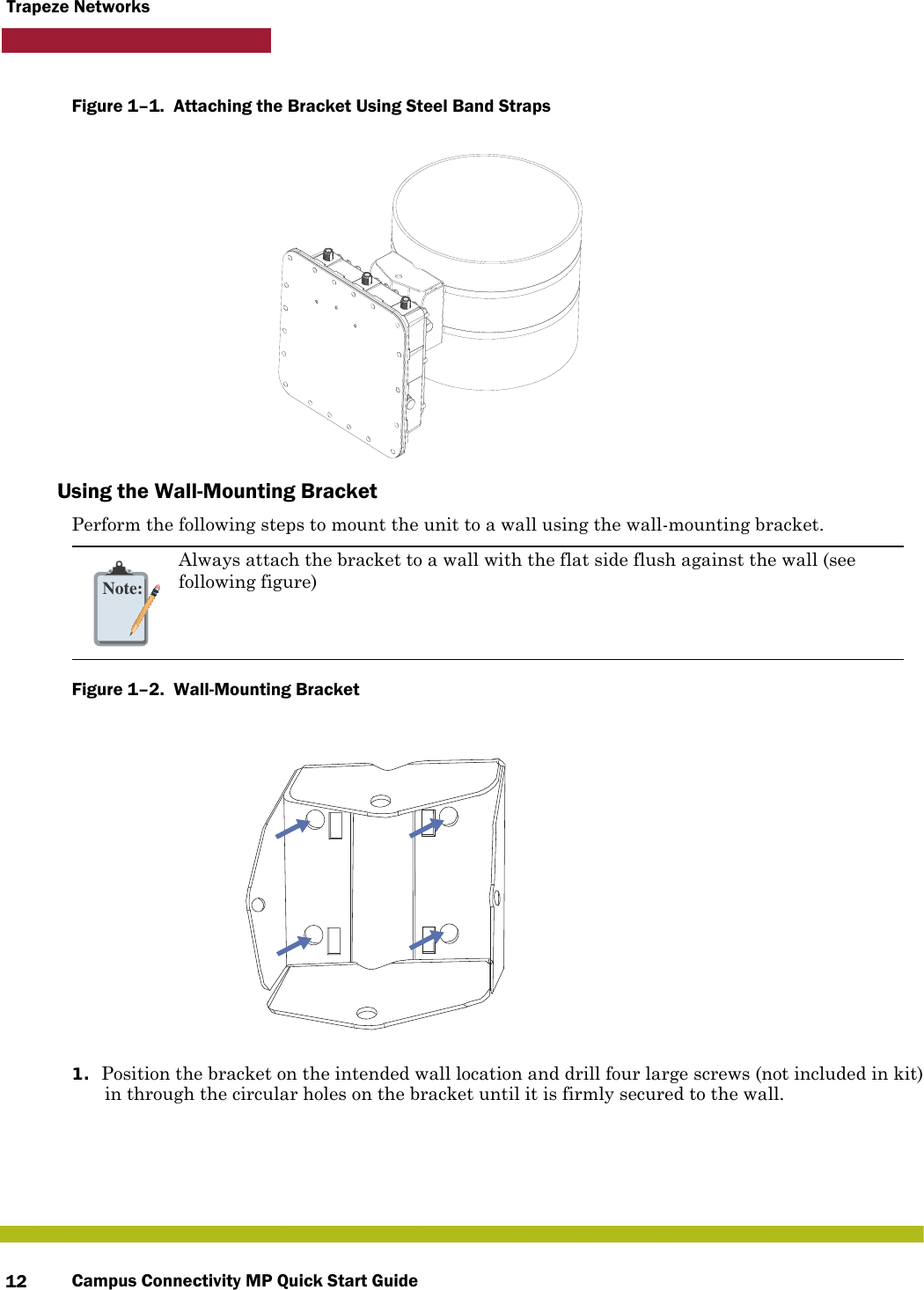
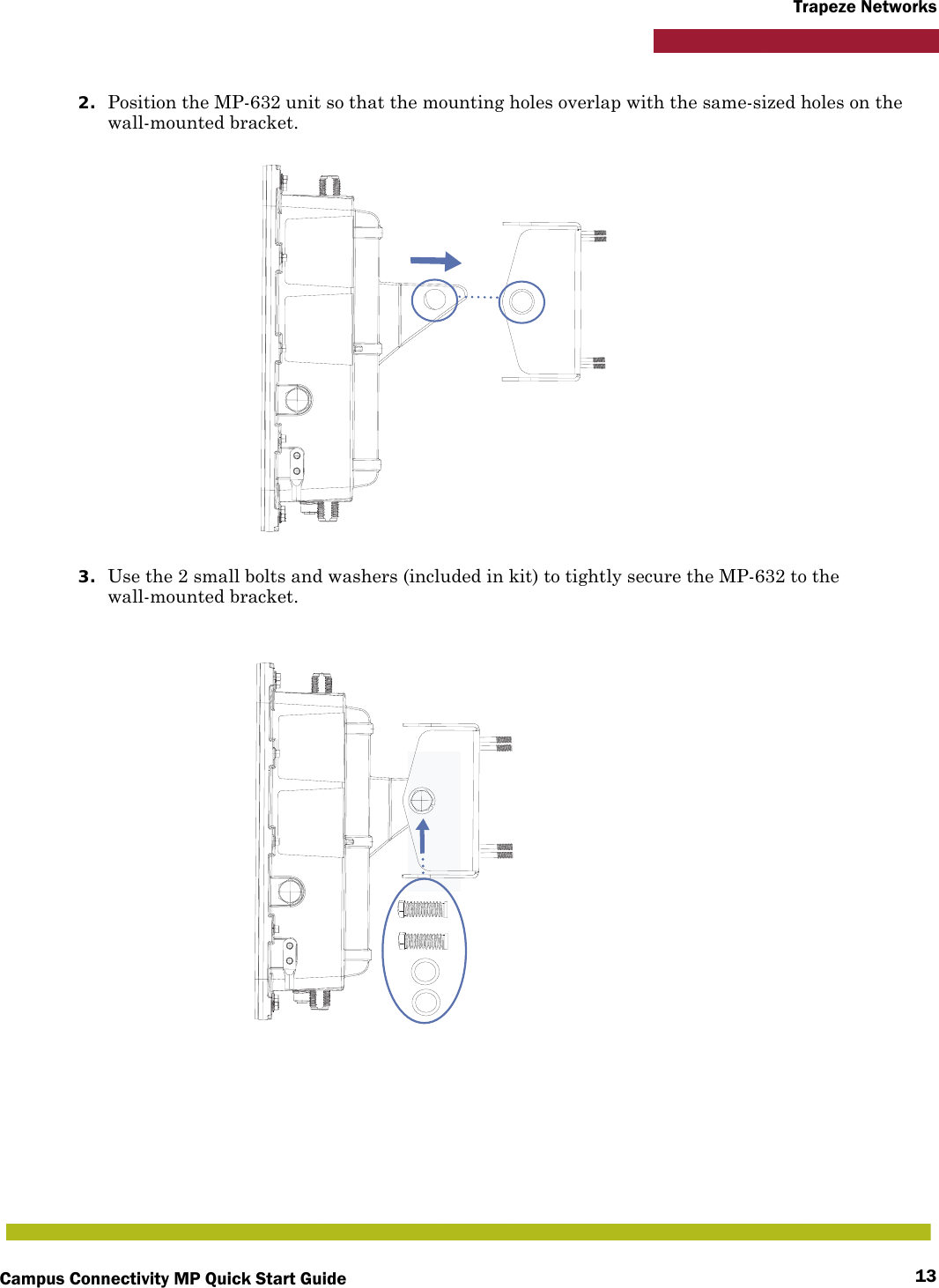
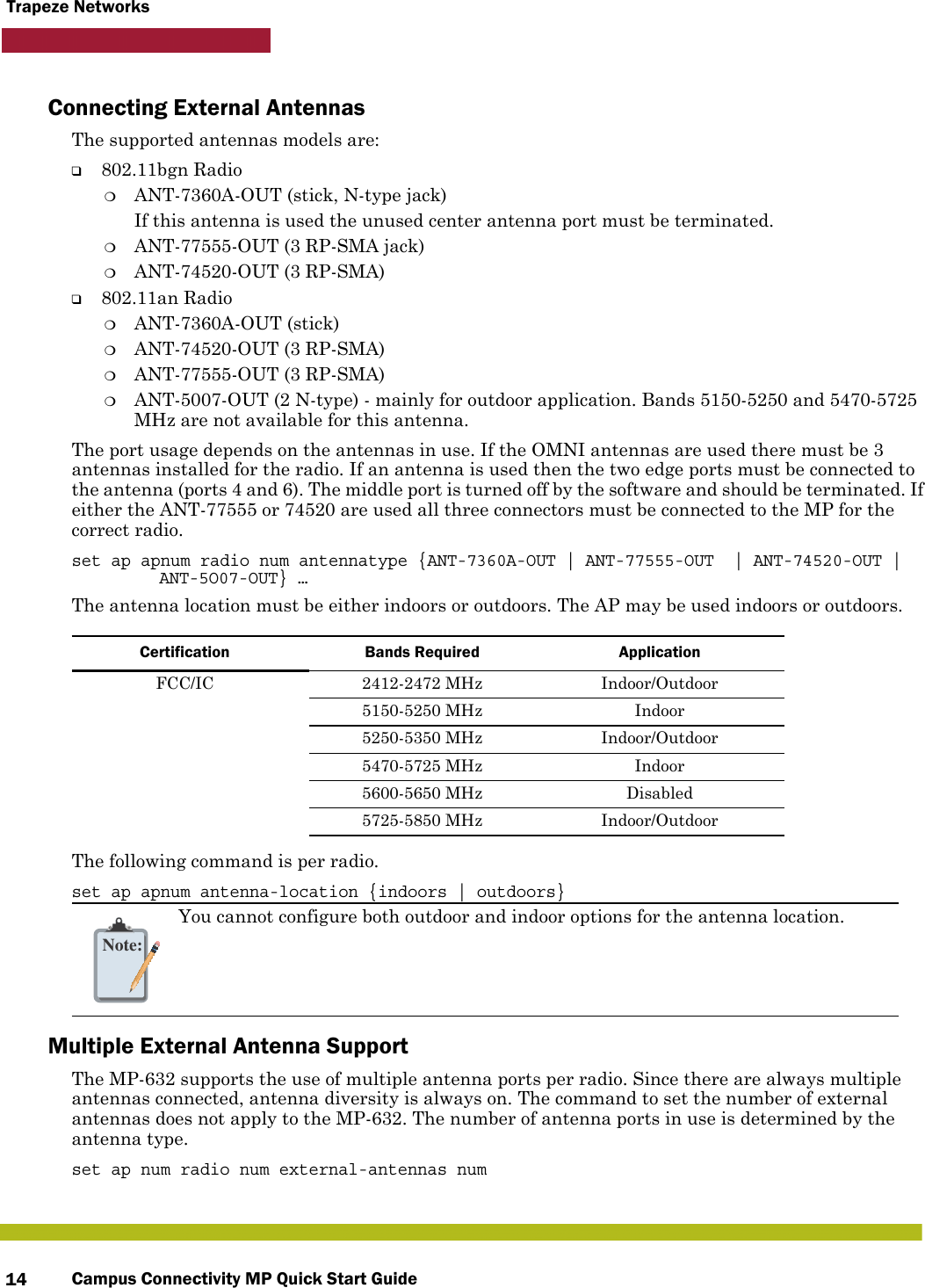
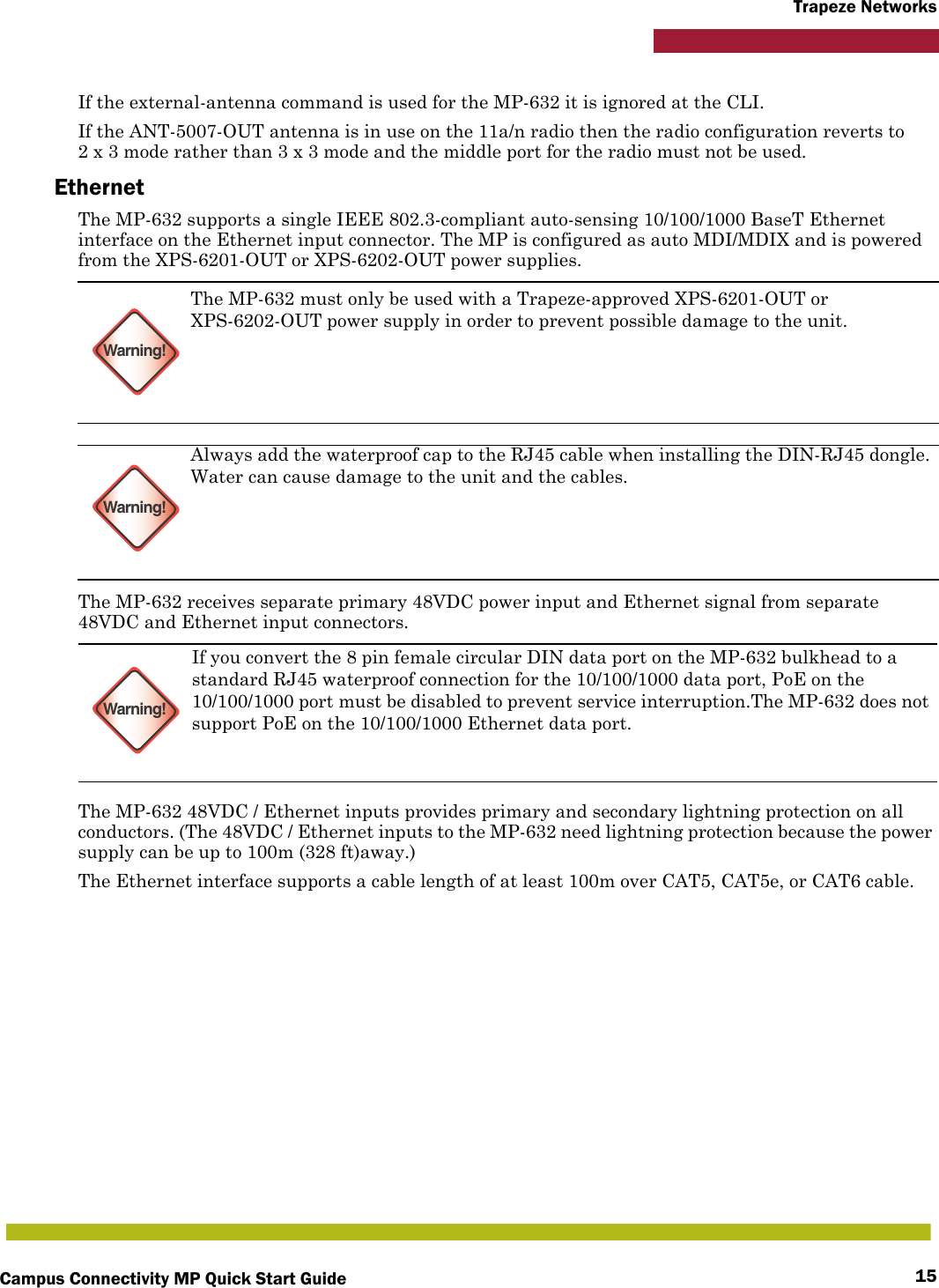
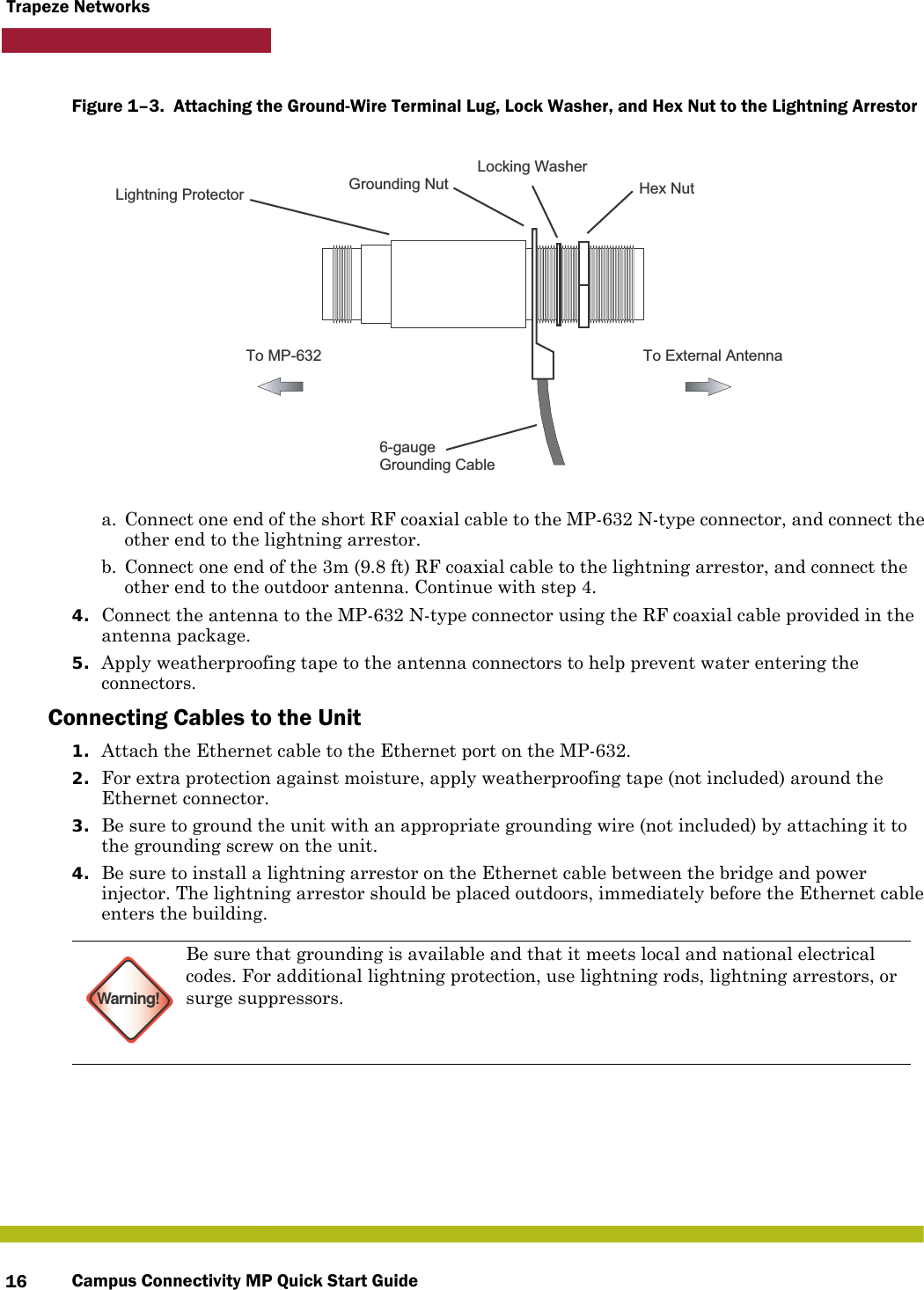
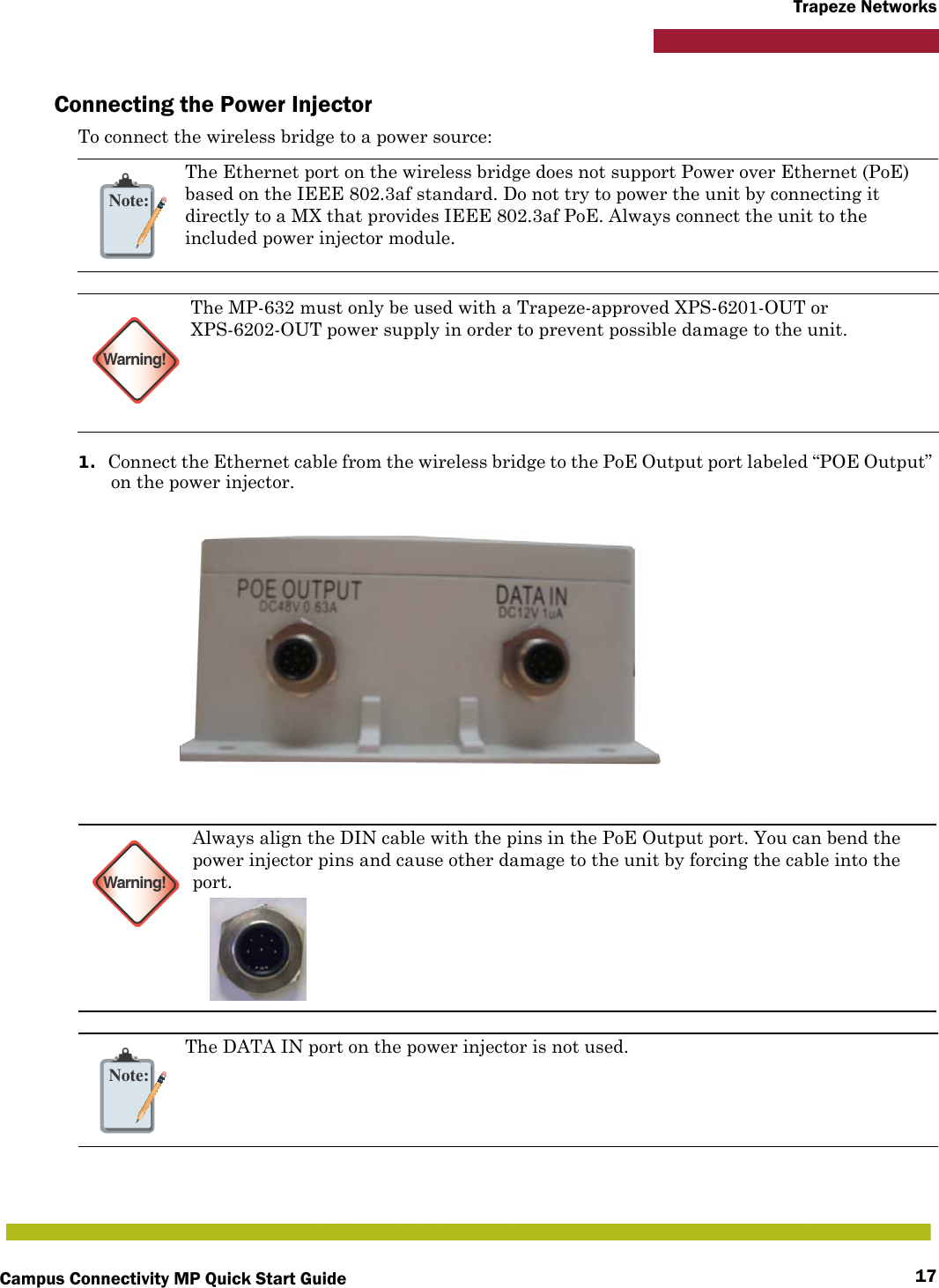
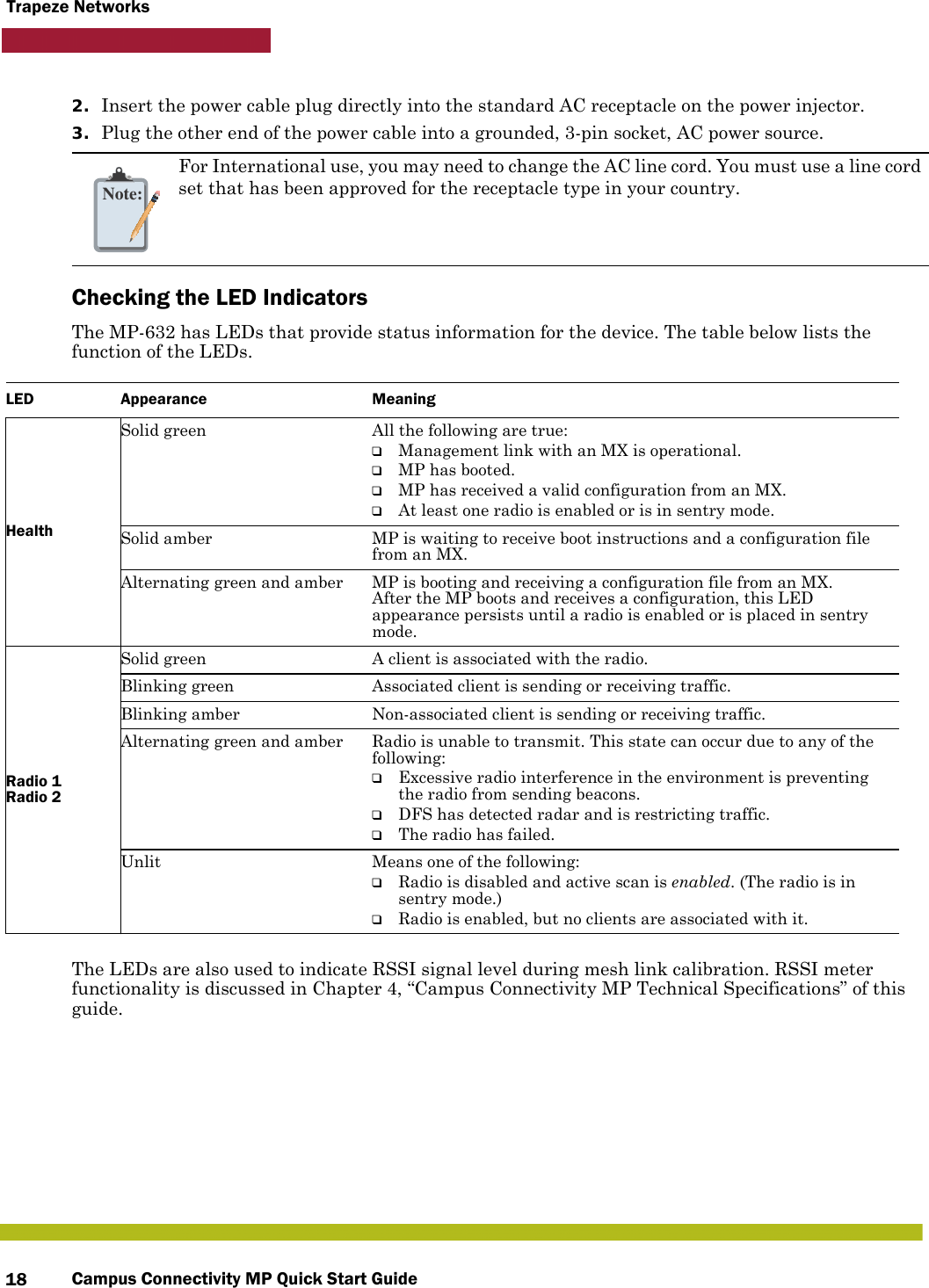
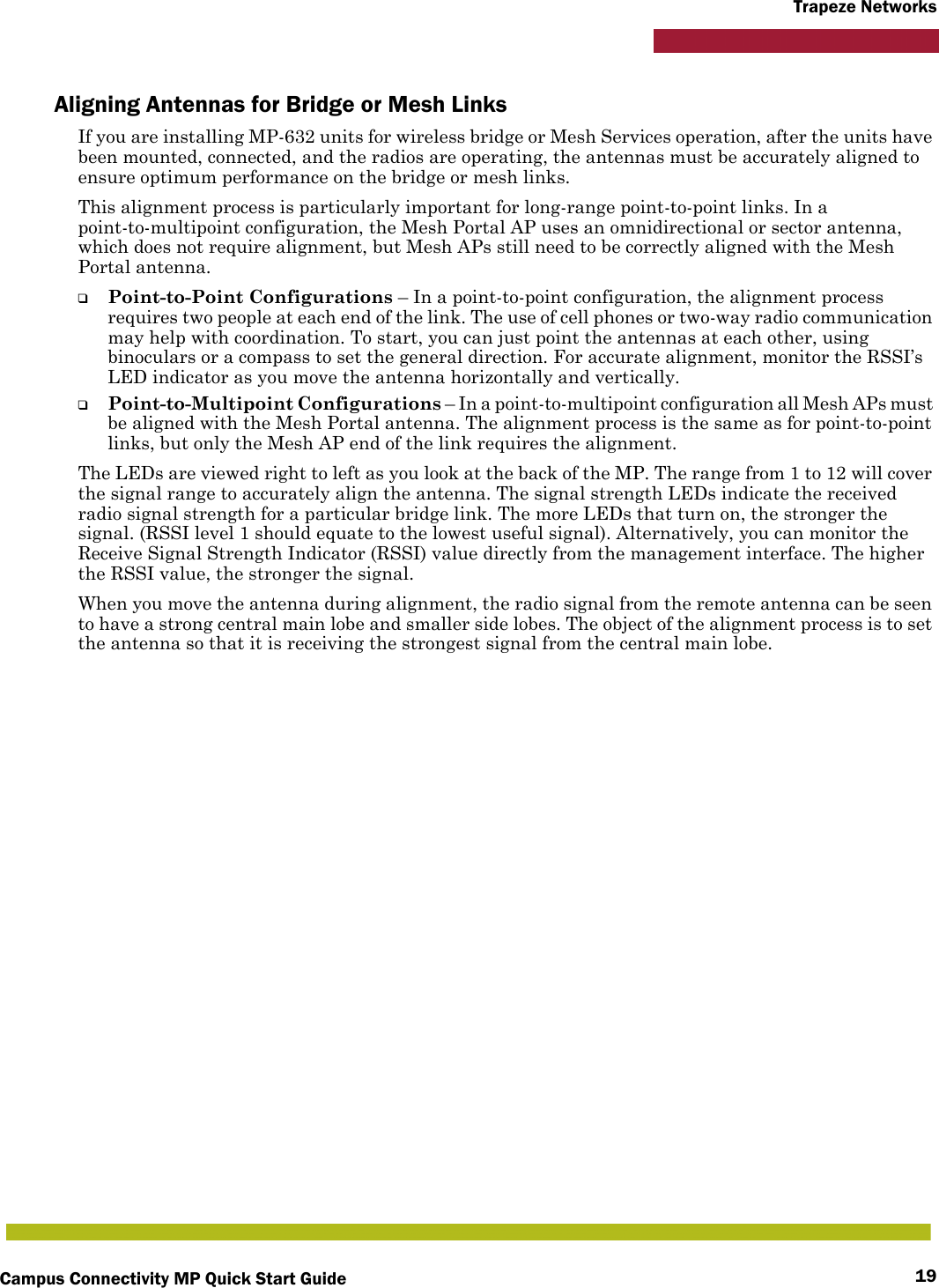
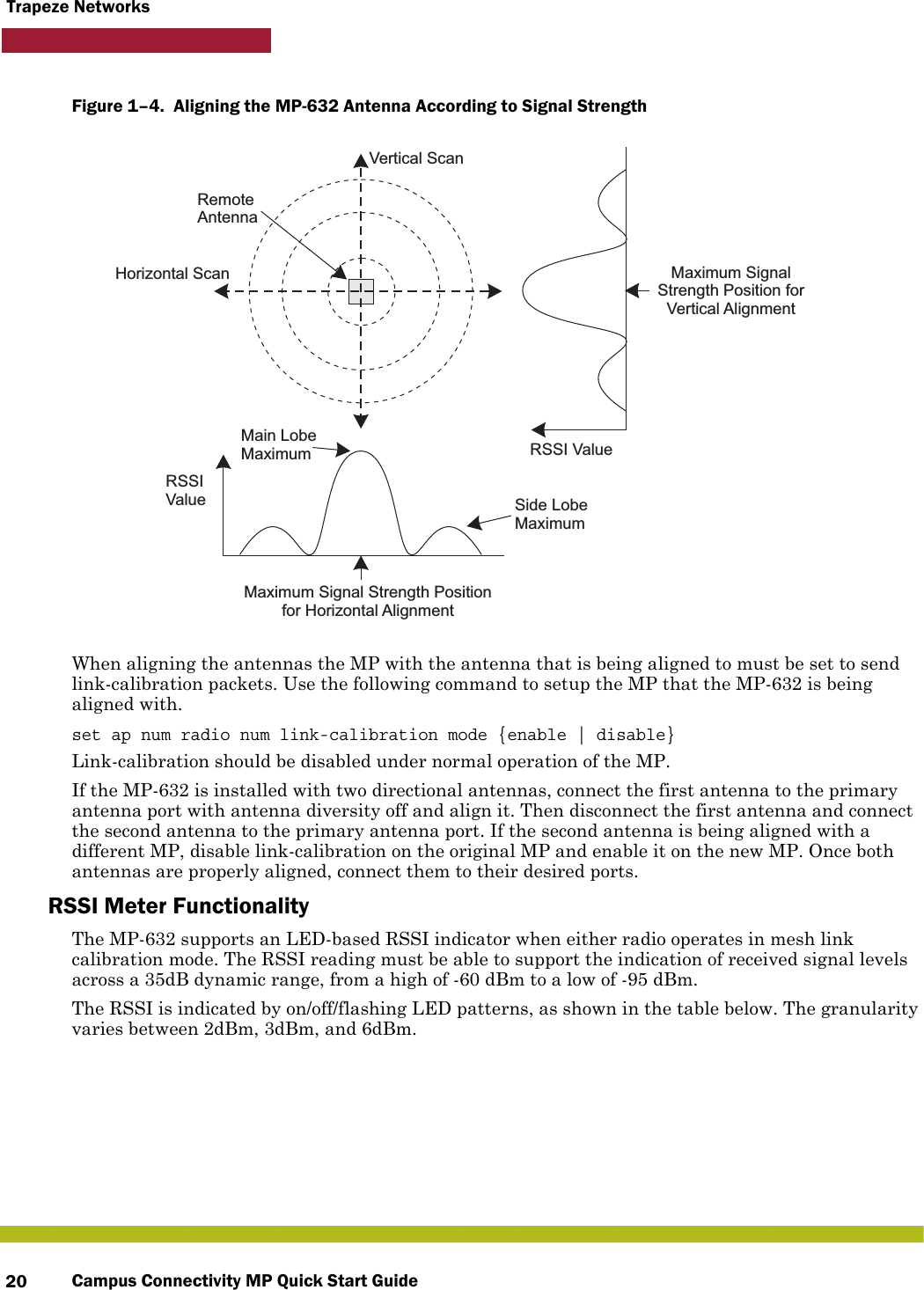
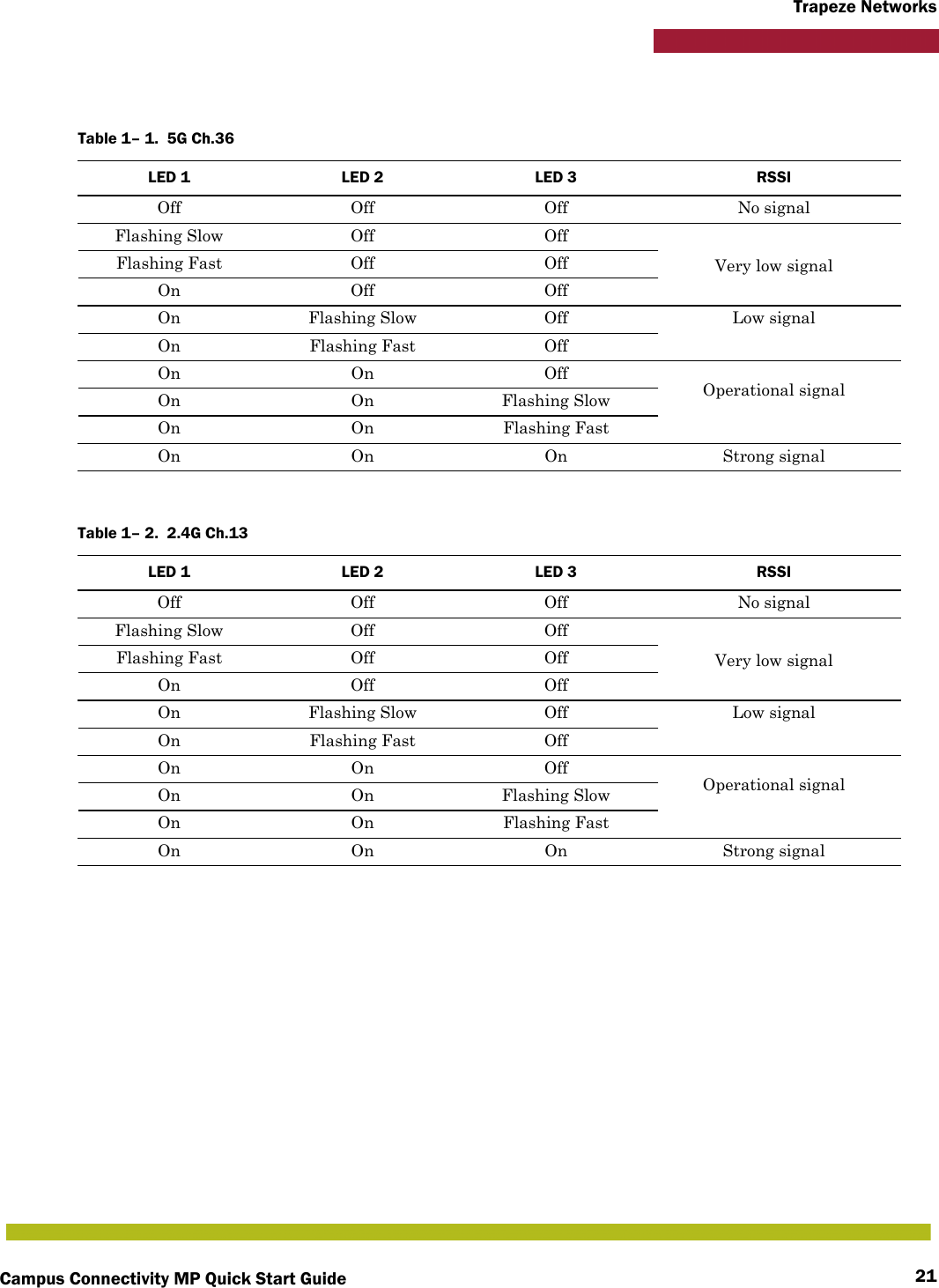
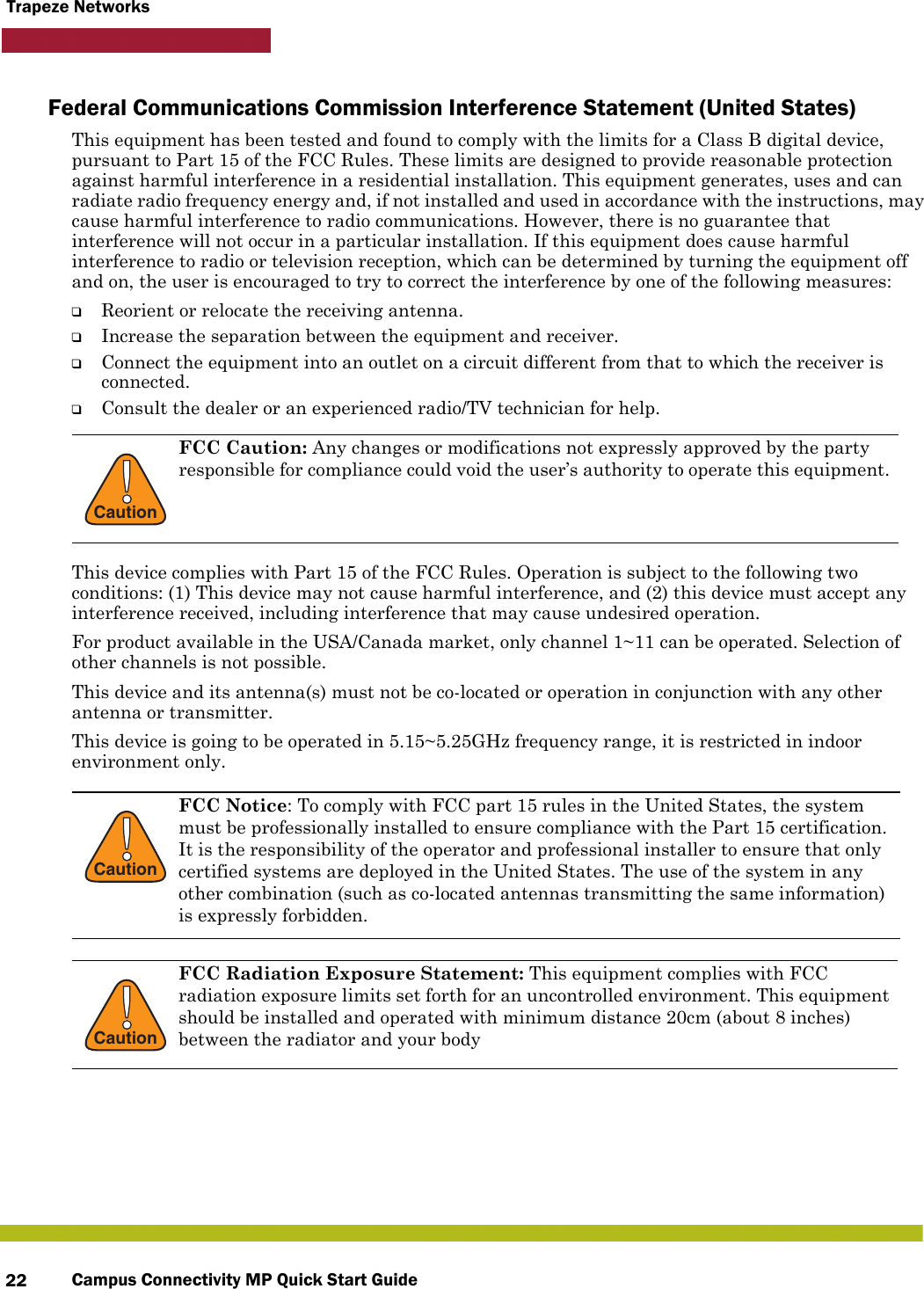
![Campus Connectivity MP Quick Start Guide 23Trapeze NetworksCanadian Department of Communications Industry Canada Notice (Canada)This digital apparatus meets the requirements of Canadian Interference-Causing Equipment Regulation RSS-210.This Class B digital apparatus complies with Canadian ICES-003.Operation is subject to the following two conditions: 1. This device may not cause interference.2. This device must accept any interference, including interference that may cause undesired operation of the device. Cet appareil numérique de la classe B conforme á la norme NMB-003 du Canada.Country Code Statement: For product available in the USA/Canada market, only channel 1~11 can be operated. Selection of other channels is not possible.This device and its antenna(s) must not be co-located or operation in conjunction with any other antenna or transmitter.To reduce potential radio interference to other users, the antenna type and its gain should be so chosen that the equivalent isotropically radiated power (e.i.r.p) is not more than that permitted for successful communication.This device has been designed to operate with the antennas listed below, and having a maximum gain of [23.5] dB. Antennas not included in this list or having a gain greater than [23.5] dB are strictly prohibited for use with this device. The required antenna impedance is 50 ohms.The device could automatically discontinue transmission in case of absence of information to transmit, or operational failure. Note that this is not intended to prohibit transmission of control or signaling information or the use of repetitive codes where required by the technology.The device for the band 5150-5250 MHz is only for indoor usage to reduce potential for harmful interference to co-channel mobile satellite systems.The maximum antenna gain permitted (for devices in the band 5725-5825 MHz) to comply with the e.i.r.p. limits specified for point-to-point and non point-to-point operation as appropriate, as stated in section A9.2(3).The maximum antenna gain permitted (for devices in the bands 5250-5350 MHz and 5470-5725 MHz) to comply with the e.i.r.p. limit. High-power radars are allocated as primary users (meaning they have priority) of the bands 5250-5350 MHz and 5650-5850 MHz and these radars could cause interference and/or damage to LE-LAN devices.!CautionIC Radiation Exposure Statement: This equipment complies with IC RSS-102 radiation exposure limits set forth for an uncontrolled environment. This equipment should be installed and operated with minimum distance 20cm (about 8 inches) between the radiator & your body.](https://usermanual.wiki/Juniper-Networks/632.Campus-Connectivity-MP-Quick-Start-Guide-Rev-A/User-Guide-1279840-Page-23.png)
